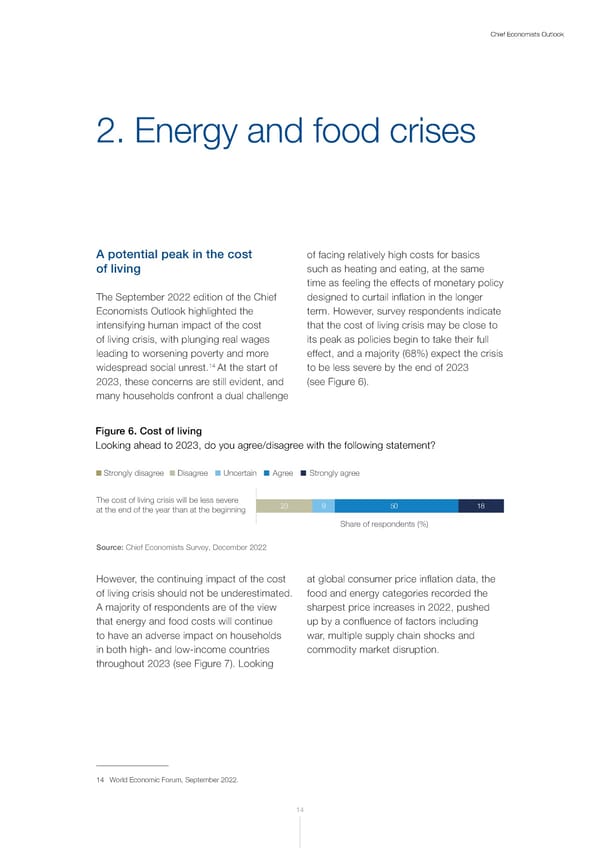14 Chief Economists Outlook 2. Energy and food crises A potential peak in the cost of living The September 2022 edition of the Chief Economists Outlook highlighted the intensifying human impact of the cost of living crisis, with plunging real wages leading to worsening poverty and more widespread social unrest. 14 At the start of 2023, these concerns are still evident, and many households confront a dual challenge of facing relatively high costs for basics such as heating and eating, at the same time as feeling the effects of monetary policy designed to curtail inflation in the longer term. However, survey respondents indicate that the cost of living crisis may be close to its peak as policies begin to take their full effect, and a majority (68%) expect the crisis to be less severe by the end of 2023 (see Figure 6). However, the continuing impact of the cost of living crisis should not be underestimated. A majority of respondents are of the view that energy and food costs will continue to have an adverse impact on households in both high- and low-income countries throughout 2023 (see Figure 7). Looking at global consumer price inflation data, the food and energy categories recorded the sharpest price increases in 2022, pushed up by a confluence of factors including war, multiple supply chain shocks and commodity market disruption. Figure 6. Cost of living Looking ahead to 2023, do you agree/disagree with the following statement? 1144 The cost of living crisis will be less severe at the end of the year than at the beginning Strongly disagreeDisagree Uncertain Agree Strongly agree Share of respondents (%) 23 9 50 18 Source: Chief Economists Survey, December 2022 14 W orld Economic Forum, September 2022.
 WEF Chief Economists Outlook 2023 Page 13 Page 15
WEF Chief Economists Outlook 2023 Page 13 Page 15